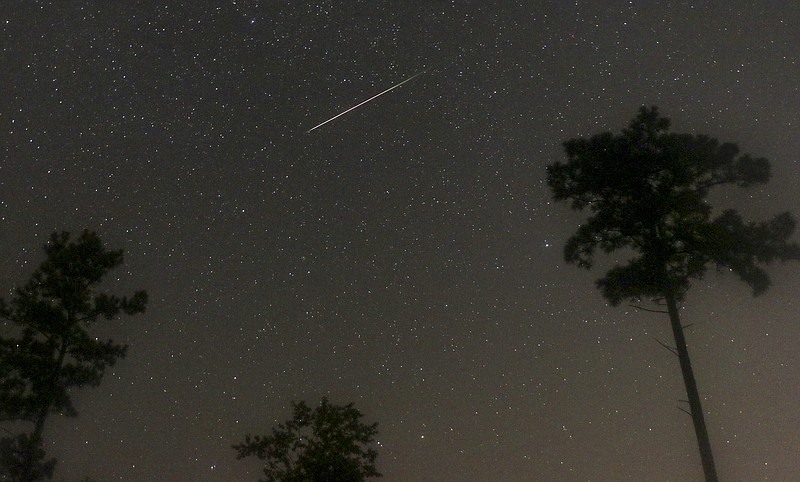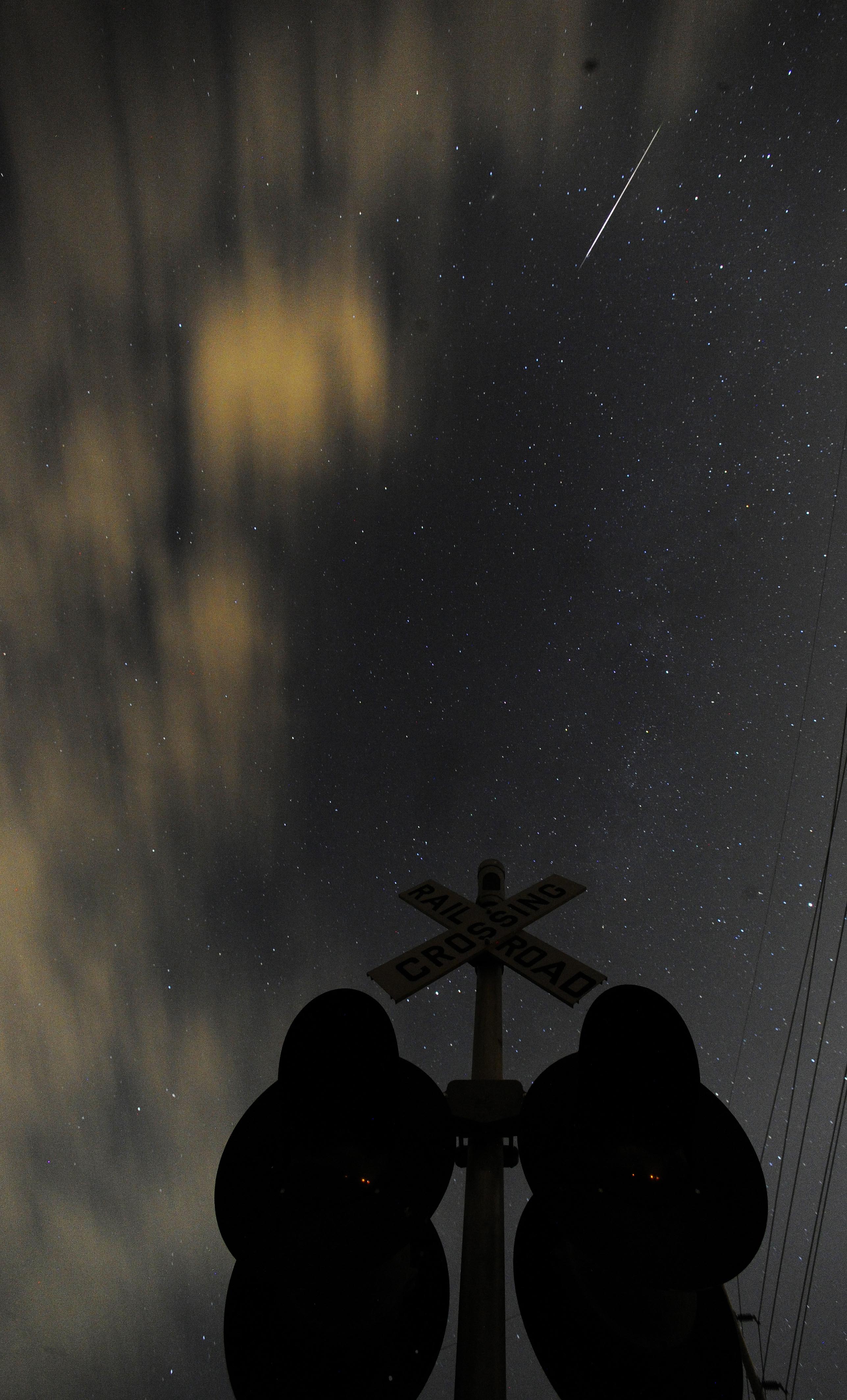Heads up, amateur astronomers. Earth is moving through the path of Comet Swift-Tuttle for a couple more weeks and the Perseid meteor shower is peaking Monday night.
If you've seen this spectacle before, you know the proper response is "Wowza!" - as long as the moon and the weather cooperate.
A favorite for its warm weather/vacation timing and sheer volume of "shootings stars," the Perseid meteor shower is one of the brightest of the year and can deliver at least one meteor per minute, sometimes in long, dramatic streaks across the sky.
But this year may be problematic. Early forecasts were calling for cloudy skies Monday night. And the moon is in a waxing gibbous phase that will have it 94% illuminated. Not quite full, but bright enough to dim the show for all but the brightest Perseids.
It's that kind of uncertainty that frustrates Jack Pitkin, operations manager of UTC's Clarence T. Jones Observatory.
"To be honest, meteor showers and I usually don't get along," he says. "When I am in the right place for one, the weather is wrong. When the weather is right, I am in the wrong place."
Still, he says, "I will probably stick my head out around midnight Monday night and see if I see anything. If nothing else, the full moon is beautiful, and I can remember we went there half a century ago."
Pitkin says no special equipment is necessary to view the meteor shower.
"Just pull up a comfortable chair and watch the show," he says. "If you can get out to a place with clear, dark skies, that will help."
Rob Simmons, a Chattanooga Police Department robbery investigator, says he expects to be looking skyward Monday night as well. In his downtime, Simmons has developed an interest in astrophotography, capturing several stellar images of the moon and planets this summer.
The hobby combines his dual interests in astronomy and photography. Simmons was a wedding photographer before he joined the CPD, but says police work is "less stressful."
"I'm more afraid of a bride than a criminal," he jokes.
His interest in astronomy was piqued when he was about 10 years old and his father woke him one night to see a meteor shower. It was the mid-1980s, he says, and the family was living in Florida. He remembers the celestial display was more "meteor storm" than meteor shower.
"You could see a meteor every second," he says. "It looked like Armageddon."
In his 20s, he actually built a telescope out of wood and mirrors.
"The first thing I saw was Saturn with its rings," he remembers. "I was hooked after that."
Now that he's older "and more secure in my employment," he says, "I can afford nicer equipment that I don't have to build myself."
His latest acquisition is an automated telescope that can locate the planets for him. "You say, 'Go to Jupiter' and push a button," he says.
He has a dedicated camera that fits in the eyepiece of the telescope to take photos, but he says the latest smartphones can produce similar results for budding hobbyists.
"Nowadays, the cameras in phones are phenomenal," he says. "For 30 bucks, you can buy a little adapter, hook it to the telescope eyepiece, download an app that's geared toward photographing the planets and start snapping pictures."
Photographing meteor showers is not as easy as honing in on the moon or a planet since there's no way to predict exactly where the meteors will fall. However, a camera with a wide-angle lens will show more sky and increase your chances of catching a shooting star on film.
Simmons says he'll be happy just to see the show.
"Sometimes it's difficult to watch because the best time for most meteor showers is usually after midnight or predawn, right before the sun rises," he says. "I'm old now [43], and I don't want to get up that early."
Contact Lisa Denton at ldenton@timesfreepress.com or 423-757-6281.
Five things to know
› What is it? The Perseid meteor shower is an annual celestial event of multiple “shooting stars” from a cloud of dust and debris from the Comet Swift-Tuttle. Though they can produce a spectacular display, most of the meteors are very small, merely grains of dust or rocks about the size of a grain of rice or piece of pea gravel.› When is it? The Perseids occur every year between July 17 and Aug. 24, when Earth crosses the orbital path of Comet Swift-Tuttle. They tend to peak around Aug. 9-13. This year’s peak is Monday night, Aug. 12 (into the morning hours of Tuesday, Aug. 13). Meteor numbers increase after midnight, but they will be visible mid to late evening as well, if conditions are favorable.› Where should I go? Find a dark, open sky, free of street lights, headlights and other light pollution. Give your eyes time to adjust to the darkness, perhaps 20 to 30 minutes. The meteors will radiate from the constellation Perseus, which rises in the northeastern sky after midnight.› How should I prepare? Just go out and look up. Binoculars and telescopes are not necessary. For comfort, take a reclining chair or blanket. The meteors come in spurts, with lulls in between.› What if I miss it? If nothing materializes for the Perseids, you have several more chances to see meteor showers this year. The Orionids peak Oct. 22, Southern Taurids on Nov. 5, Leonids on Nov. 18, Geminids on Dec. 14 and Ursids on Dec. 23. As with the Perseids, bright moonlight will interfere with all but the Ursid meteor shower. The drawback is it’s less flashy than its counterparts, with a modest 10 meteors per hour even under the best conditions, according to Sky & Telescope, an online magazine of the American Astronomical Society. That compares to 90 for Perseids and 100 to 120 for Geminids.


